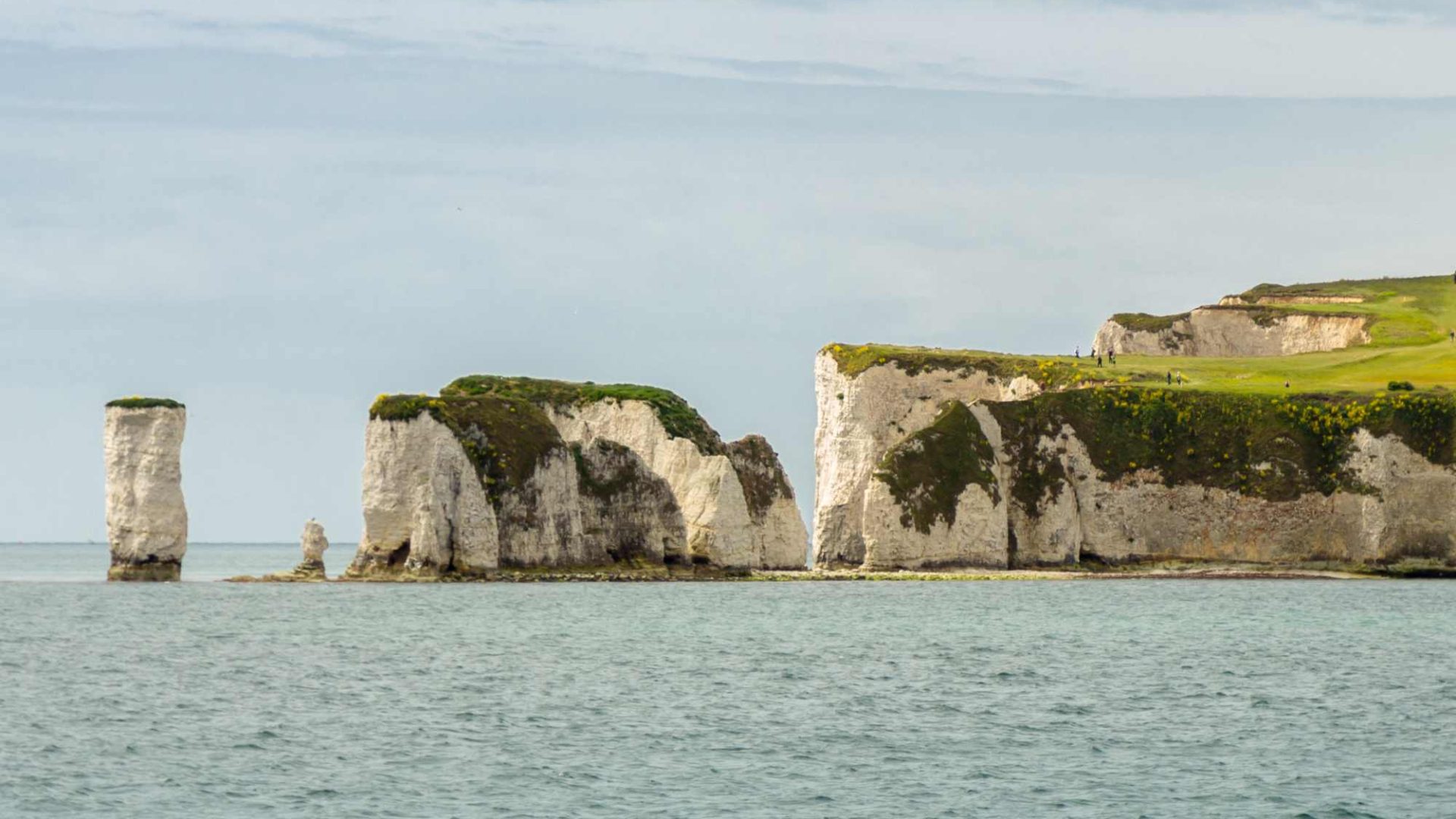

The Dorset coastline runs from the sandy beaches of Bournemouth to the East Devon border. A millennia in the making, this rare coastline is dotted with dinosaur footprints and geographical marvels, earning it the title of the Jurassic Coast. The UK boasts only 25 World Heritage Sites, and the Jurasic Coast holds the distinction of being the first ‘natural’ World Heritage Site, making it the sole coastline in the UK to receive this status. What makes this coastline so exceptional? It offers an almost uninterrupted timeline spanning the Mesozoic Era, encompassing the Triassic, Jurassic, and Cretaceous ages, totaling 185 million years of coastal history. The Jurassic Coast showcases natural marvels such as Lulworth Cove and Durdle Door, providing laypeople with breathtaking geographical wonders, extensive sandy beaches, fossils, and a rugged coastline.
Geologists and geomorphologists consider this coast one of the world’s most significant sites for teaching and research. The rocks within the World Heritage Site are arranged from oldest to youngest as you move from west to east. This arrangement is somewhat unusual, as these rock layers originally formed atop one another. If they had remained undisturbed, we would have had to drill deep into the Earth to observe them. However, around 100 million years ago, massive tectonic forces tilted the rock layers, revealing the older rocks and creating a continuous sequence along the coast—an extraordinary event that allows us to witness these layers today.
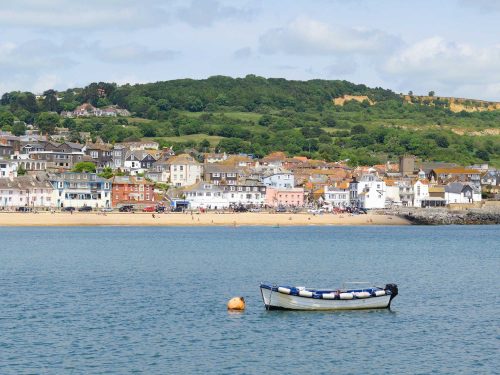
These closely linked areas are world famous for their fossils. Lyme Regis has a lovely pebble beach where you can enjoy a stroll along the promenade, which is home to antique shops, crystal shops, eateries and ice cream parlours. Parking is available in the town. From the main car park you can walk along the coastal path, with fantastic views back to Charmouth, freshwater bay and Lyme Regis beach. Charmouth is a lovely little village with good eating pubs and a fossil beach to explore.

Finest barrier beach in Europe. The beach protects Weymouth Bay from the Portland race. Its not suitable for batheing but its a great spot for fishing and walking. The beach links Wyke Regis and Portland.
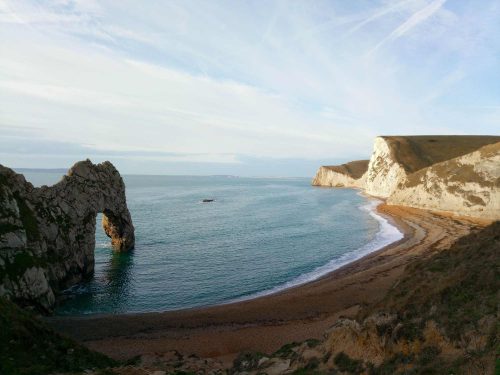
The Jurassic Coast harbors the world-famous, breathtaking natural arch, located at its heart. Visitors can walk from the car park to the beach, though there are numerous steps to navigate, and spend a leisurely day on the pebble beach. Please be aware that this beach does not have any restroom facilities. Durdle Door represents a highly unusual natural landmark. Ordinarily, limestone, which constitutes the arch, rests horizontally. However, the powerful geological forces that shaped the Alps extended to Dorset, causing the stone to become steeply vertical. Subsequently, the softer rock beneath eroded, giving rise to the arch we observe today. Kayakers also frequent this location.
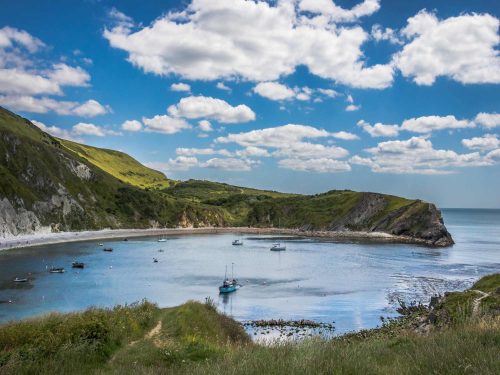
Lulworth Cove is a quintessential location for the study of different rates of erosion in the formation of bays and headlands. It is also a beautiful and popular tourist destination. The same forces which created Durdle Door also created the Cove with layer upon layer of Jurrasic rocks on display. You can take a rib ride from Lulworth and take a trip along the Jurassic Coast.

Brilliant white chalk has been eroded into steep cliffs and the famous collection of sea stacks known as ‘Old Harry Rocks’. There used to be an Old Harrys wife but this has sadly been eroded away.
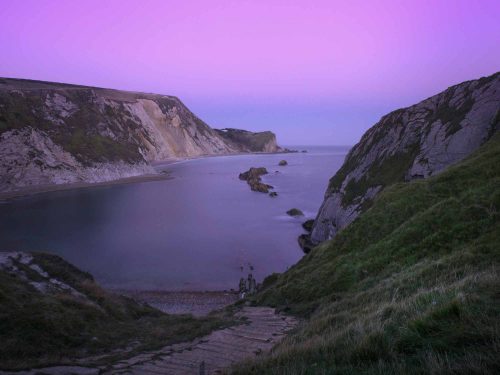
The Dorset Coast has been a frequent backdrop for major Hollywood blockbusters and television productions, captivating audiences with its stunning scenery.
The award-winning series “Broadchurch,” starring David Tennant and Olivia Coleman, made extensive use of West Dorset’s dramatic cliffs as a filming location. The gripping thriller, written by Chris Chibnall, showcased the region’s breathtaking coastal landscapes.
In 2015, “The Big Blue,” hosted by River Cottage favorite Hugh Fearnley-Whittingstall, aired on the BBC. The show was anchored from the dramatic clifftop setting of Durdle Door in Dorset, providing stunning visual backdrops to the program.
ITV1’s “Harbour Lives” partially filmed in Dorset, exploring the lives of those who live and work by the sea. Ben Fogle ventured along the Jurasic Coast, engaging with local communities and showcasing the area’s unique character.
Portland Harbour provided the setting for the film “The Boat that Rocked,” featuring Bill Nighy. The historic harbor, with its distinctive architecture and maritime heritage, added authenticity to the film’s nautical theme.
Lulworth Cove, with its picturesque cove and chalk cliffs, made an appearance in the Hollywood blockbuster “World War Z,” starring Brad Pitt. The stunning natural beauty of the location contributed to the film’s apocalyptic atmosphere.
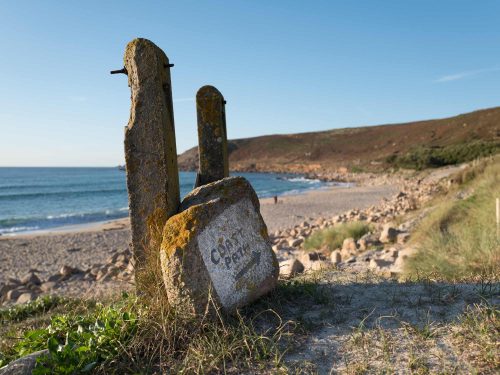
You can explore much of the Jurassic Dorset coast, as the South West Coast Path, England’s longest footpath, winds its way along the dramatic coastline. Enjoy exhilarating clifftop walks, but always maintain a safe distance from the edge. These coastal paths offer incredible opportunities for birdwatching, dolphin-spotting, painting, and simply soaking in the awe-inspiring beauty of the Jurassic Coast. However, it’s important to exercise caution after rainfall, as the paths can become slippery and landslides may occur. To ensure your safety, stick to the marked tracks and keep dogs on leashes.
For a more leisurely exploration, consider exploring the Jurassic Coast by bus. Hop on the X53 bus service, which traverses the coastline, allowing you to hop on and off at various points. This flexible approach enables you to walk specific sections of the coast path and then return by bus, making for a perfect day out.